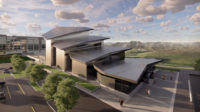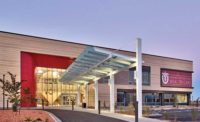Power Outages
Coordinating the work on an active campus has been nearly as challenging as designing and installing the new systems says Shireen Ghorbani, communications specialist for Facilities Management.
“Early on, we had town hall-style meetings with all the staff and managers of each building that would be affected,” Ghorbani says. “We had to make sure researchers were aware when things were going to happen and how long power would be shut down.
Many of them have material that is temperature sensitive, and they had to make arrangements for that.”
McDonough says they have tried to keep power outages to less than 24 hours and the majority have been under 12 hours.
“Sometimes we have to do multiple outages. It depends on the building. We also try to do work during the summer when there is less activity and after hours and holidays but with some places, like the health sciences and hospital, there is no downtime, there are always people there,” he adds.
Ghorbani says the project has disrupted campus life to some extent and can be frustrating to students and faculty because like many infrastructure projects, the end result is difficult to see.
“When we have a road closed or a sidewalk torn up because a new building is going up, people can see that, and they are excited about it, but not everyone is excited when the lights just come on because they expect it,” she says.
“During this project we’ve said, ‘If we are successful, no one will know we were here,’” says McDonough.
Key Players
Owner: State of Utah/University of Utah
Design engineer: Spectrum Engineers
Substation engineering: Ken Gardner Engineering
General contractor: Layton Construction







Post a comment to this article
Report Abusive Comment